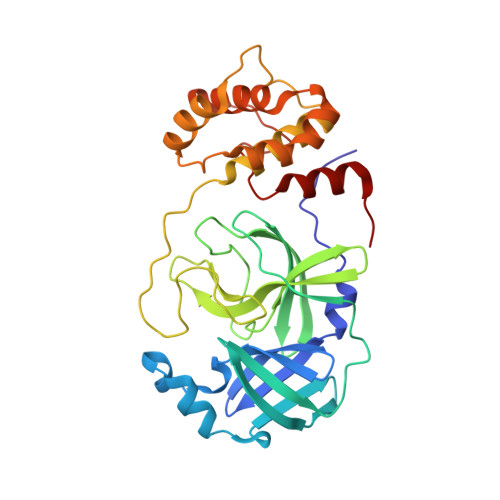Hepatitis C virus NS3/4A inhibitors and other drug-like compounds as covalent binders of SARS-CoV-2 main protease.
Andi, B., Kumaran, D., Kreitler, D.F., Soares, A.S., Keereetaweep, J., Jakoncic, J., Lazo, E.O., Shi, W., Fuchs, M.R., Sweet, R.M., Shanklin, J., Adams, P.D., Schmidt, J.G., Head, M.S., McSweeney, S.(2022) Sci Rep 12: 12197-12197
- PubMed: 35842458
- DOI: https://doi.org/10.1038/s41598-022-15930-z
- Primary Citation of Related Structures:
7JYC, 7K3T, 7K40, 7K6D, 7K6E, 7MNG, 7MRR - PubMed Abstract:
Severe acute respiratory syndrome-coronavirus 2 (SARS-CoV-2), which causes coronavirus disease 2019 (COVID-19), threatens global public health. The world needs rapid development of new antivirals and vaccines to control the current pandemic and to control the spread of the variants. Among the proteins synthesized by the SARS-CoV-2 genome, main protease (M pro also known as 3CL pro ) is a primary drug target, due to its essential role in maturation of the viral polyproteins. In this study, we provide crystallographic evidence, along with some binding assay data, that three clinically approved anti hepatitis C virus drugs and two other drug-like compounds covalently bind to the M pro Cys145 catalytic residue in the active site. Also, molecular docking studies can provide additional insight for the design of new antiviral inhibitors for SARS-CoV-2 using these drugs as lead compounds. One might consider derivatives of these lead compounds with higher affinity to the M pro as potential COVID-19 therapeutics for further testing and possibly clinical trials.
- Center for BioMolecular Structure, NSLS-II, Brookhaven National Laboratory, Upton, NY, 11973, USA. bandi@bnl.gov.
Organizational Affiliation:


















